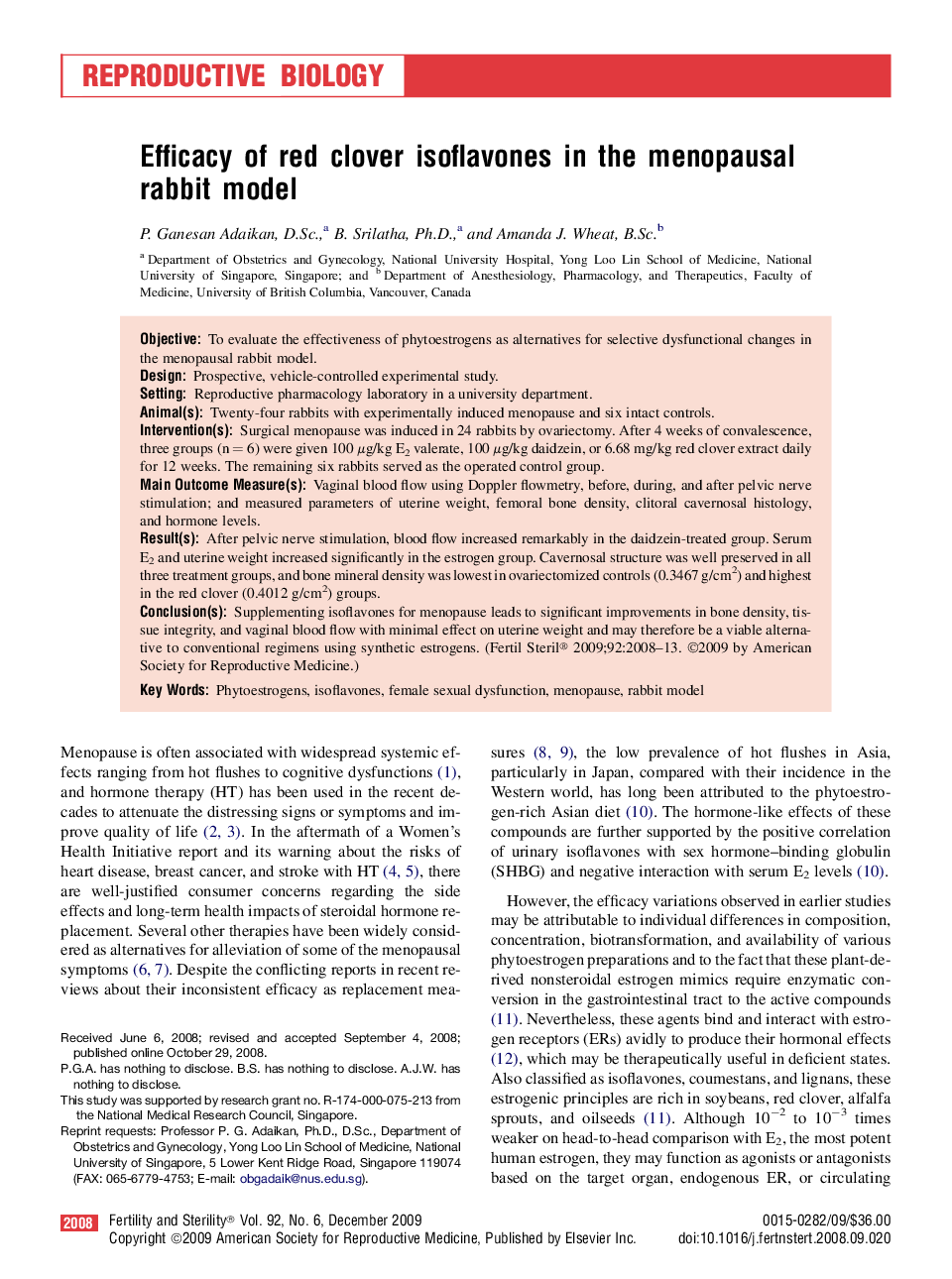| کد مقاله | کد نشریه | سال انتشار | مقاله انگلیسی | نسخه تمام متن |
|---|---|---|---|---|
| 3936430 | 1253449 | 2013 | 6 صفحه PDF | دانلود رایگان |

ObjectiveTo evaluate the effectiveness of phytoestrogens as alternatives for selective dysfunctional changes in the menopausal rabbit model.DesignProspective, vehicle-controlled experimental study.SettingReproductive pharmacology laboratory in a university department.Animal(s)Twenty-four rabbits with experimentally induced menopause and six intact controls.Intervention(s)Surgical menopause was induced in 24 rabbits by ovariectomy. After 4 weeks of convalescence, three groups (n = 6) were given 100 μg/kg E2 valerate, 100 μg/kg daidzein, or 6.68 mg/kg red clover extract daily for 12 weeks. The remaining six rabbits served as the operated control group.Main Outcome Measure(s)Vaginal blood flow using Doppler flowmetry, before, during, and after pelvic nerve stimulation; and measured parameters of uterine weight, femoral bone density, clitoral cavernosal histology, and hormone levels.Result(s)After pelvic nerve stimulation, blood flow increased remarkably in the daidzein-treated group. Serum E2 and uterine weight increased significantly in the estrogen group. Cavernosal structure was well preserved in all three treatment groups, and bone mineral density was lowest in ovariectomized controls (0.3467 g/cm2) and highest in the red clover (0.4012 g/cm2) groups.Conclusion(s)Supplementing isoflavones for menopause leads to significant improvements in bone density, tissue integrity, and vaginal blood flow with minimal effect on uterine weight and may therefore be a viable alternative to conventional regimens using synthetic estrogens.
Journal: Fertility and Sterility - Volume 92, Issue 6, December 2009, Pages 2008–2013